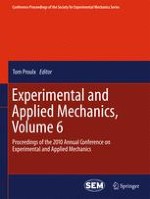2011 | OriginalPaper | Chapter
Temperature Moisture and Mode Mixity Dependent EMC- Copper (Oxide) Interfacial Toughness
Authors : A. Xiao, G. Schlottig, H. Pape, B. Wunderle, K. M. B. Jansen, L. J. Ernst
Published in: Experimental and Applied Mechanics, Volume 6
Publisher: Springer New York
Activate our intelligent search to find suitable subject content or patents.
Select sections of text to find matching patents with Artificial Intelligence. powered by
Select sections of text to find additional relevant content using AI-assisted search. powered by
An ongoing root cause of failure in microelectronic industry is interface delamination. In order to explore the risk of interface damage, FE simulations for the fabrication steps as well as for the testing conditions are generally made in the design stage. In order to be able to judge the risk for interface fracture, the critical fracture properties of the interfaces being applied should be available, for the occurring combinations of temperature and moisture preconditioning. As a consequence there is an urgent need to establish these critical interface fracture parameters. For brittle interfaces such as between epoxy molding compound (EMC) and metal (-oxide) substrates the critical energy release rate (or delamination toughness) can be considered as the suitable material parameter. This material parameter is strongly dependent on the temperature, the moisture content of the materials involved and on the so-called mode-mixity of the stress state near the crack tip. The present study deals with experimental investigation of the delamination toughness of EMC-Copper lead-frame interfaces as can directly be obtained from the production line. A small-scaled test setup was designed. The test setup is suitable for actualizing both pure mode I DCB (double cantilever beam) loading and pure mode II ENF (end notched flexure) loading and allows transferring two separated loadings (mode I and mode II) on a single specimen. The setup is flexible and adjustable for measuring specimens with various dimensions. For measurements under various temperatures and moisture conditions, a special climate chamber is designed. In this paper, the experiment and simulation procedure for establishing the interfacial fracture toughness from fracture test results at different temperatures, especially in the glass transition temperature region of epoxy molding compound (EMC) will be shown. In order to calculate accurate interface toughness, the material property of molding compound is characterized as a function of temperature. A detailed discussion of how EMC responses at its glass transition region will be provided. The influence of the material property on interfacial fracture toughness will be given.
